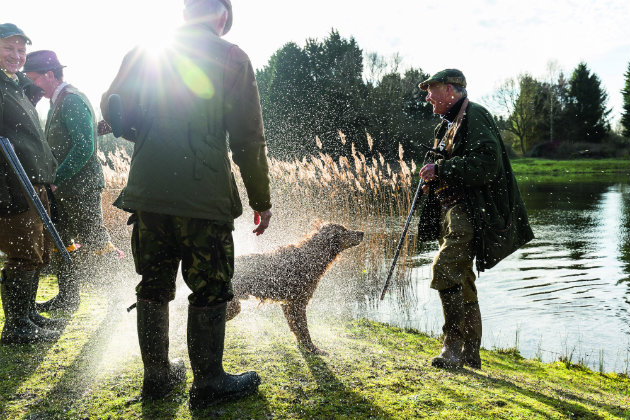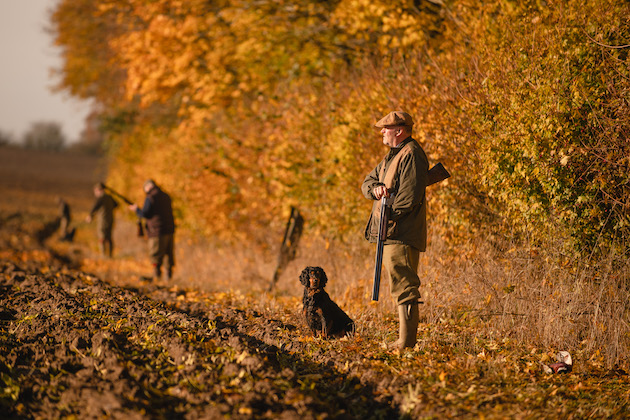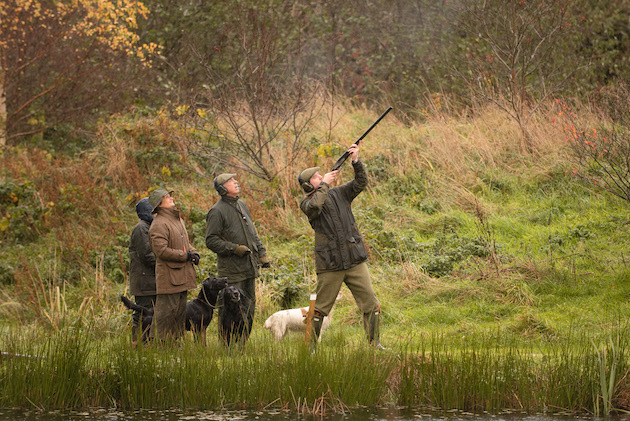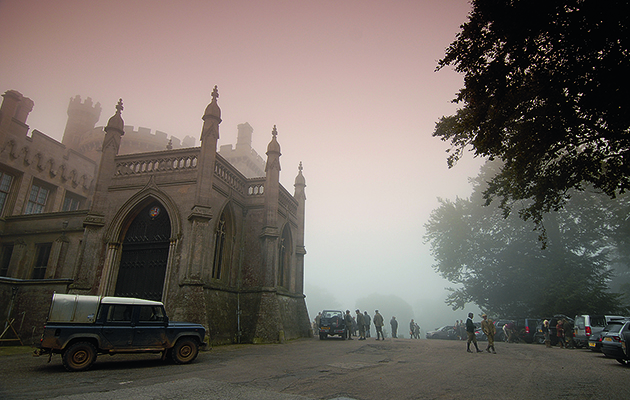A visit to Will Garfit’s award-winning shoot
Richard Faulks was lucky enough to visit the award-winning 70 acre shoot of pigeon supremo Will Garfit and see what all the fuss was about

I’ve heard a great deal about Will Garfit’s 1988 Laurent Perrier Award winning 70 acre shoot, and last January I managed to finally see what all the fuss was about.
Known by its proper name, “The Hauxton Pits Shoot” or affectionately – “The Pits” – was founded in 1972 when Will accidentally bought a redundant gravel pit at auction.
The land only had a very shallow seam of gravel, and the site had been left as a blank canvas with a kind of ridge and furrow pattern over it, and the high water table often rose and filled in the furrows. There were no requirement in those days for the land to be reinstated or landscaped in any way, but Will spotted an opportunity that others hadn’t. With a great deal of time, energy and enthusiasm in his early twenties, he set about planning and slowly forming the land into different areas, habitats and lakes, which now all look so natural.

Will Garfit’s 70 acre shoot
Game and wildlife management in mind
Done on a shoestring, with game management and wildlife management very much in mind, Will has produced what he describes as “five star accommodation” for flora and fauna. His simple ethos for the gamebirds is: “If you give them perfect habitat, food and water, why would they leave?” It appears that – surprise, surprise – the same goes for all forms of wildlife and, as expected, there is a symbiotic relationship between running a great shoot and providing a safe haven for wildlife. A total of 130 species of birds have now been counted with 79 known to breed on the shoot while 400 species of wild plant have been counted so far!

The Hauxton Pits Shoot in Cambridgeshire has reached maturity exactly as Will envisaged
High expectations
At first, the quality of the shooting wasn’t of paramount importance, and the days ran as half rough shoot and half driven – they were just pleased if they managed to get a pheasant in the bag! Standards and expectations have now risen considerably. Eight days per year are now shot, with an average bag of 100 head. With 700 pheasants and 150 mallard are released and these numbers seem to work well for Will, and this isn’t putting too large a strain on the land and wildlife. The shoot is surrounded on three of its four sides by houses, around 70 of them. So that’s one neighbour per acre and it is easy to see why Will, having achieved all of this, is now one of the Purdey Award judges.
This season had been a difficult one for the shoot as its keeper of 35 years, Brian Morley, sadly died on the 4 December. “It has been a great loss to myself, and the shoot, in many different ways. He was a great friend, a marvellous countryman and character and will be sorely missed.” Will is doing all the keepering as he did when the project first started, which he enjoys greatly, though the plan was for him to do less not more.
The shoot
With such a small area to cover, 10 drives were planned for the day, although the maze like environment feels far larger than its acreage suggests. With the eight Guns briefed about non lead cartridges for the first drive, and to be very quiet on the way to their pegs, they set off to see if they can get around some very wary greylag geese that have moved into the area, and some of the remaining mallard. As we rounded the corner and the lake came into view, so did a skein of geese that were making a swift exit. Luckily they were followed by a good number of mallard and the last of the geese soon after. With some good shooting, the first birds are in the bag and Will’s golden retriever, Ollie, made some fine retrieves from the lake before walking next to the waiting Guns to have a good shake!

A happy group of Guns
On Will’s record day, the bag contained 12 species and seeing the abundant wildlife it’s easy to see how this was achieved! It really is an oasis. Each subsequent drive brought new challenges for the Guns and the variety of both birds and scenery was amazing, including pegs that are placed out in the lake on spits of land that are covered by an inch of water, giving the impression that some of the guns really can “walk on water”. Each and every subsequent drive had its own feel, whether it’s over water, marsh, woodland or birds flown from traditional maize covers; it’s hard to see how more diversity could be achieved in such a small area!
Final drive
The final drive was Horseshoe Lake – unsurprisingly a horseshoe shaped lake where birds are flown from the peninsular over the lake to the semicircular line of Guns, which is probably the signature drive and one that Will planned and planted 44 years ago. Now reaching maturity exactly as envisaged, Will said: “I could have painted it then and its grown exactly as planned.” He’s a true renaissance man, with many talents. Many of you will know of Will’s writing and painting work and his books; “Will’s Shoot” and “Will’s Shoot Revisited” where you can find out the full story of the project.

A good and mixed bag was had on the day
The final Bag for the day was 27 pheasants, two woodcock, 17 mallard, 27 pigeons, one greylag, one crow, one magpie, and one jay – bringing a 77 head total.








